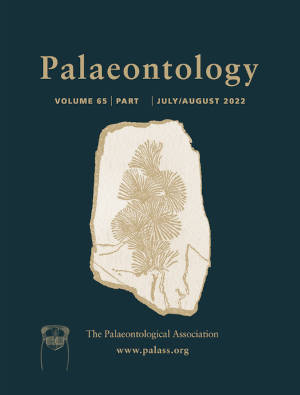Article: Palaeobiology of the early sauropodomorph Mussaurus patagonicus inferred from its long bone histology
Publication: Palaeontology
Volume:
65
Part:
4
Publication Date:
2022
Article number:
e12614
Author(s):
Ignacio A. Cerda, Diego Pol, Alejandro Otero, and Anusuya Chinsamy
Abstract
Abstract We present a detailed histological study of long bones from an ontogenetic series of Mussaurus patagonicus, an early sauropodomorph from the Lower Jurassic of Argentina. Twenty long bones, including humeri, femora and fibulae, obtained from 13 individuals of different body sizes were sampled for histological analysis. In general terms, the cortical bone is formed by a well vascularized fibrolamellar and parallel fibred bone. Except for the smaller individuals, cyclical growth marks (CGMs) are well recorded in all the specimens but their number and relative position is highly variable. Mussaurus exhibits marked variation regarding relative growth rate, with some individuals growing much faster than others. Such variation affects the size of the adult individuals, which results in a poor correlation between the body size and the age/ontogenetic stage for this taxon. These discrepancies may be related to sexual dimorphism and/or developmental plasticity. Intraspecific variation is also recorded with regard to the growth strategies, which can vary from cyclical, as in other early sauropodomorphs, to continuous, as reported in sauropods. Sexual maturity appears to have been reached between 23 and 31 years, which is delayed in comparison to other early sauropodomorphs but more comparable with derived sauropods. The attainment of somatic maturity appears to have been reached at about 14 years after onset of sexual maturity. Mussaurus is a sauropodiform, phylogenetically closer to sauropods than most other Early Jurassic sauropodomorphs, and therefore provides critical information for understanding palaeobiological aspects of the origin of sauropods and the onset of gigantism in this lineage.
